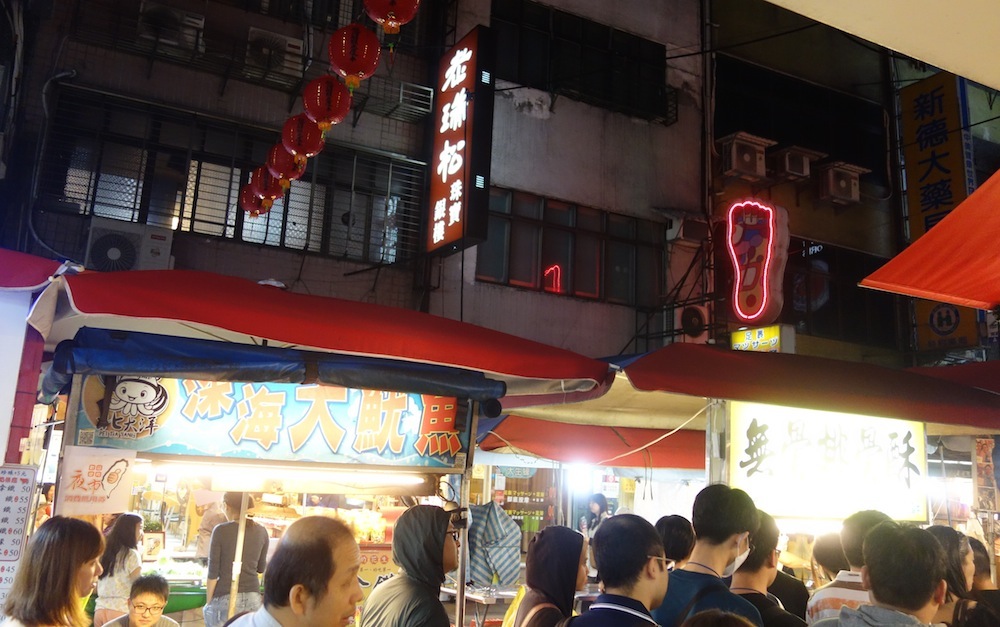South Koreans couldn’t go freely abroad until 1989, at which point the repressed desire to do to so turned into potent fuel for a still-blazing travel industry. This industry has a media side, producer of books and television shows in a quantity and variety surprising to even the most travel-minded foreigners. It also has a tourism side, comprising the countless companies offering package trips of various lengths to countries and cities all over the world. Or at least I gave up trying to count the companies when I checked in at Incheon Airport last week for my own first Korean package tour, three days and three nights in Taiwan, a popular foreign destination for Koreans since Koreans have had foreign destinations to make popular.
Proximity has something to do with it: reachable within three hours’ flight, Taipei is closer to Seoul than even most American tourist-destination cities are to Los Angeles. Taiwan has also had a place in my own consciousness at least since I began watching the films of Taiwanese auteurs like Hou Hsiao-hsien, Tsai Ming-liang, and Edward Yang, but my investment in Taiwanese cinema as a whole never quite matched my investment in the Korean and Japanese varieties. My knowledge of Taiwan itself lagged behind proportionately, though at some point it began to look like a manageable entry point into the unignorable Sinosphere, without the burden of intimidatingly vast size and historical complexity presented by mainland China itself — and, more practically speaking, without the extra charge for a tourist visa.
Korea and Taiwan also have a deeper commonality as fellow members of what Dutch Asia specialist Ian Buruma calls “the old Japanese empire” in God’s Dust, a book based on Buruma’s travels around Asia in the 1980s that I happened to throw into my bag as I left for this trip. In it, Taiwan and South Korea share a chapter that takes as its theme the shape of Japan’s colonial legacy. “Modern Seoul looks more like Tokyo every day,” Buruma writes, “with its neon-lit coffee shops, its bric-a-brac modern buildings and its neon-lit pleasure areas tucked away behind the steel and glass.” In Taipei “Japanese culture is everywhere, in a Western guise, its origins blurred, suppressed, or forgotten,” a phenomenon that “makes the surface of modern Taiwan so familiar to anyone who knows Japan.” Everywhere in the South Korean, Taiwanese, and Japanese capitals are “forms of modern kitsch twice removed from their source, and thus they almost defy interpretation.”
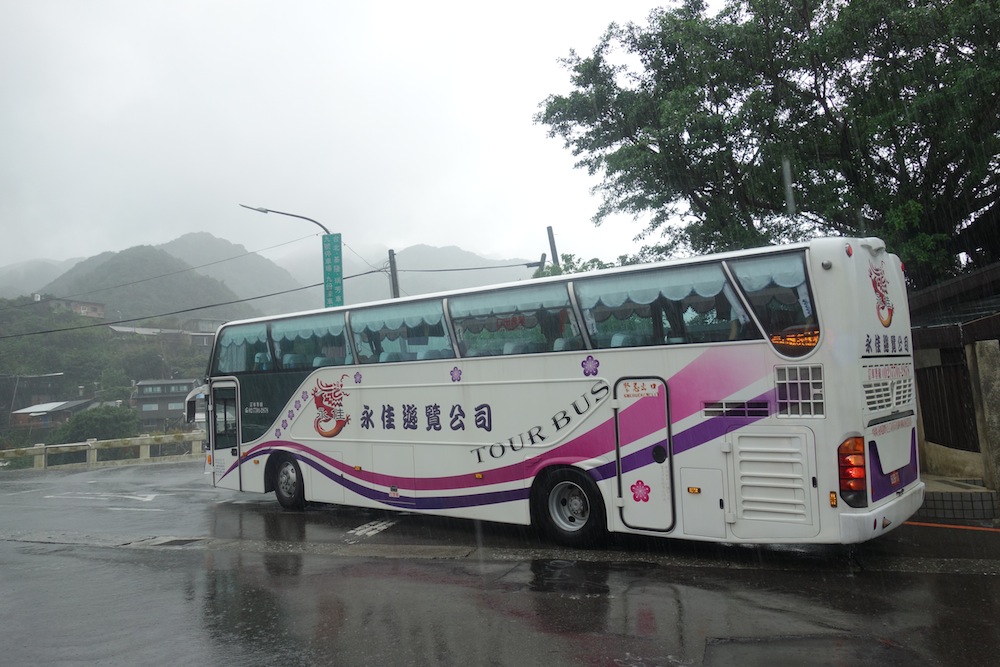
On the tour-bus ride in from the airport, I could see right away how much more Japanese Taipei is than Seoul, in the varied textures and aesthetic mix-and-match of the buildings down to the Japanese branding of many essential businesses: Family Mart convenience stores, Yamamoto delivery trucks. Despite all that has changed over the past three decades, Taipei remains what Buruma calls “one of the great nouveau riche cities of East Asia,” a place “brash, lively, and in dubious taste.” In that sense it was exactly what I’d hoped to find, an urban reality recognizable from films like Edward Yang’s That Day, on the Beach, in which, as Buruma puts it, “The hybrid city, so often depicted as a symbol of modern evil, actually looks alluring. The neon advertisements of Japanese products, the streets at dusk clogged with traffic, the office interiors, the TV commercials, have, or are shown to have, a compelling beauty.”
In the event, I mostly took in this compelling through the windows of the bus. That I expected otherwise owes to my unfamiliarity with the Korean package tour as a form of travel. Despite having seen the schedule, filled as it was with meals, historical sites, and shopping opportunities, I figured we might get through the planned activities by the early evening and then go our separate ways. But those group activities lasted from 9:00 in the morning at least through dinnertime ten or eleven hours later, at which point we were all expected to ride back to our distant hotel on the bus. To remain in the city center and find one’s own way home at night required special dispensation of the kind more readily granted to foreigners than Koreans. But then, being not just a foreigner but the only foreigner in the group, I figured it couldn’t hurt to take any advantages that came my way as more an object of curiosity than a member of the team.
That team included several mothers and their children: one with two teenage daughters, and two others, traveling together, each with a ten-year-old son. One of the boys approached me and asked whether I was a foreigner, a question I’d certainly never heard from a Korean before, and one complicated by the context. In Taiwan we were all foreigners, but though the Korean word for foreigner means simply “person of an outside country,” its sense is, without exception, “non-Korean.” (Korean immigrants tend use it to refer the general population of the country in which they live, no matter how long they’ve been there.) But we were also still in Korea in the sense that were still speaking and hearing the Korean language — not just with each other but with many of the workers in local shops and restaurants, as well as our driver who made up for his lack of a vocabulary with a voluble enthusiasm — and having experiences ostensibly geared to Korean tastes.
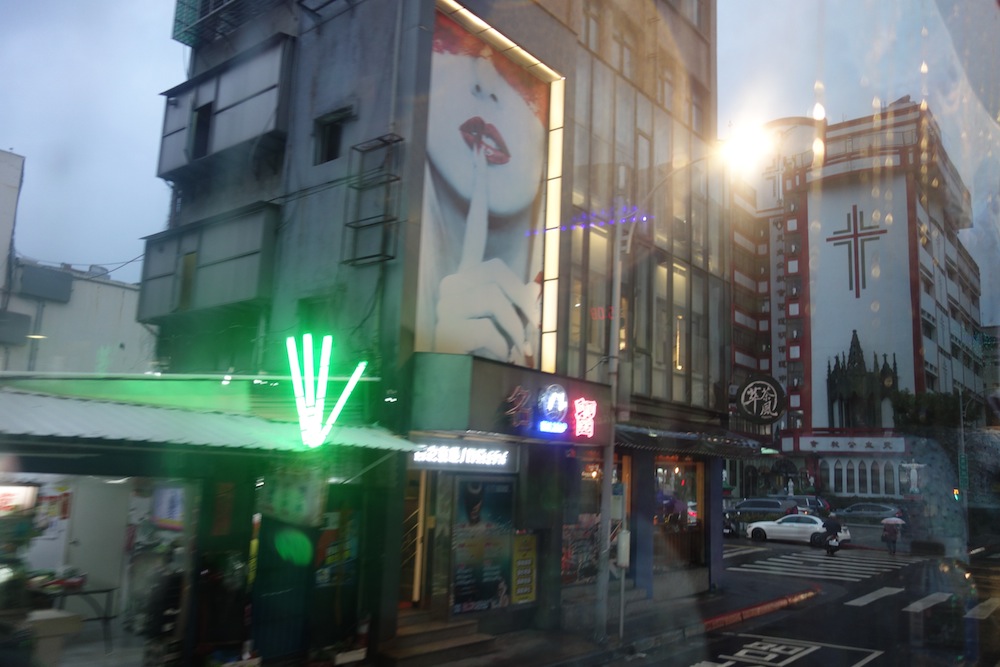
Taiwan has gained a reputation as one of Asia’s food capitals, thanks especially to its desserts, none of which I looked forward to trying as much as its famous “ice cream burrito.” Garnished with peanut shavings and cilantro, this treat figured specifically into our schedule, part of an excursion to the perpetually thronged mountain town of Jiufen, known as the aesthetic inspiration for Hayao Miyazaki’s Spirited Away. There we each received half a burrito, but the reduced size bothered me less than the modified ingredients: without asking, they’d held the cilantro, an herbal bête noire for many Koreans. (I later sought out the genuine article myself, suspecting that cilantro-free Taiwanese food reflects the true nature of the cuisine about as well as cilantro-free Mexican food.) On a visit to a historic gold mine, outside of which an old man with a flute played “Arirang,” the unofficial Korean national anthem, we sat down to a boxed “miner’s lunches,” each containing a healthy portion of kimchi.
Even more kimchi came with the final meal of the tour, which we ate at a Korean restaurant in Taipei, though given my own appetite for the stuff, I can hardly complain. My taste was not, however, shared by another member of the group, the husband of a well-traveled fortysomething couple with matching mountaineering backpacks. During a beef noodle soup dinner of which he ate little, this kimchi-hating Korean praised what he saw as the adaptability of Americans by comparison to the pickiness of his own people: When Americans go abroad, as he saw it, they just roll up their sleeves and dig in. (I didn’t know how to tell him how many of my countrymen have never applied for a passport, let alone contemplated the prospect of life outside driving distance from a Taco Bell.) In several of the eateries we visited, we cleared out not long after the arrival of one or more other Korean tour groups, suggesting a certain uniformity in route planning between one Korean tour company and another.
Still, package tours in general, and Korean package tours in particular, do deliver on the promise of taking you to the biggest sights. The biggest sight in Taiwan had to have been at the Chiang Kai-shek Memorial Hall, in whose entrance sits what Buruma describes as “a huge bronze statue of the Generalissimo, looking like a huge smiling Buddha.” Standing stock-still below him were a pair of young soldiers in uniforms and helmets of blinding white, bayonet-equipped rifles at their sides, whose flamboyantly solemn changing ceremony we arrived just in time to watch. Then as now, “young tourists bow to the statue, take pictures of each other, and giggle, perhaps to break the absurd air of worship in the building.” The museum inside contains artifacts from every stage of Chiang’s life, including the black limousines in which he was chauffeured and an impeccably detailed recreation of his office. Behind the desk sits a replica of the Generalissimo himself, albeit one merely life-sized.
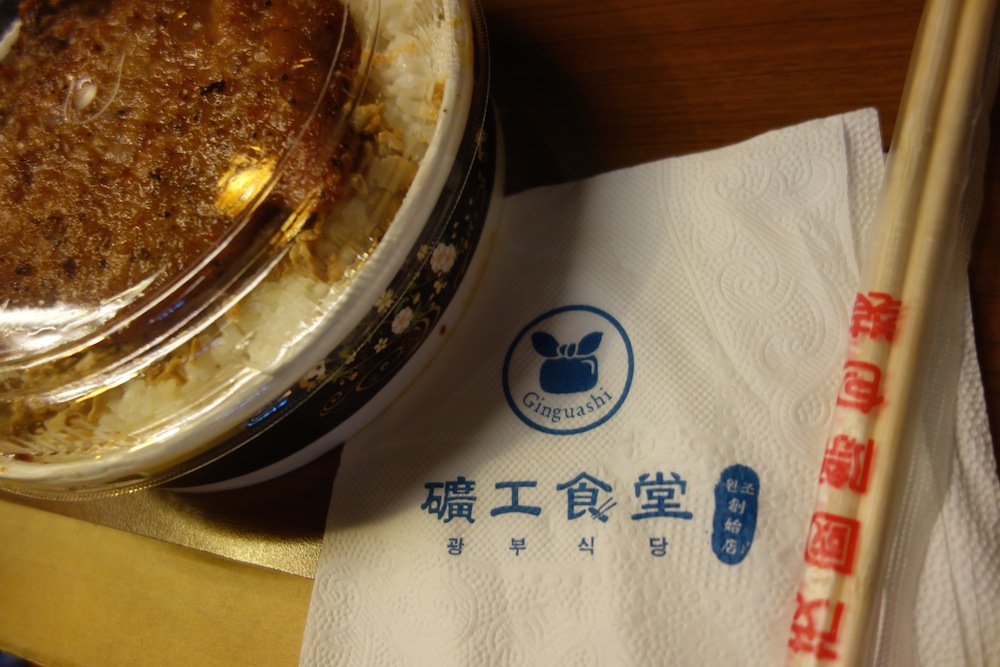
This institutional glorification of Chiang gave off an almost North Korean intensity, but our tour guide spoke of him with seemingly genuine admiration. A middle-aged woman of mixed Chinese and Korean parentage born in Korea but resident in Taiwan since middle school, she spoke in fluent Korean riddled with terms from the 1960s. But she clearly knew her audience, commenting more than once on the “double eyelids” of the indigenous Taiwanese, a facial feature that has become the signature offering of the Korean plastic surgery industry. She also made sure to take our pictures in the spots where all the other Korean tourists do, taking our cellphones to snap us one by one in front of backgrounds for use of which other Korean tour groups waited impatiently: the steps of the Memorial Hall, the Taipei 101 tower’s enormous earthquake damper, the most picturesque tea house in Jiufen. Our tight schedule kept us from drinking any tea at that last, but at least we had pictures that showed we’d negotiated the crowds and the staircases — and on that particular day, an ever-worsening downpour — on the way up.
Some of us also left with souvenirs, which our guide had allowed us forty minutes to walk around and buy. It was hardly our only opportunity to do so: our final day began with mandatory shopping, the aspect of Korean package tours that everyone had warned me about. Some companies offer special “no shopping” packages, but most build their business models on driving all their customers into the shops with which they have arrangements. Our guide told us she’d go easy on us and cut the usual four shopping stops in Taipei down to three — but no fewer, since she’d have to pay a fine to the company if we did any fewer than that. (Some guides make most of their pay on shopping commissions: A Korean woman told me of a package tour she took in Laos where, after her group’s tour bus collided with another on the way to a shopping destination, their guide desperately tried to convince everyone that they weren’t injured enough to go to the hospital.)
Some of these shops cater specifically to Koreans. In one utilitarian-looking storefront a Korean-speaking employee, possibly an actual Korean, led us through a tasting of all Taiwan’s best-loved snacks, from pineapple cakes to mango jellies to nougat cracker sandwiches, having already provided us with a form on which to mark down how many boxes we would buy to take back to Korea. Discounts for bulk purchases were available, she reminded us, a boon to the majority of the group who would be expected to return with gifts for co-workers, neighbors, and extended family members. Exercising my foreigner’s exemption, real or perceived, I felt little pressure to spend money, and in any case I respond by temperament to encouragements to shop with a refusal to do so. This curmudgeonliness saves me money, to be sure, but at times I wondered whether it wasn’t closing me off to the cultural experience I wanted to have with a Korean tour group in the first place.

Approached with open eyes, even these inescapable shopping sessions can become cultural experiences in themselves: surely the vast duty-free emporia of Taipei, staffed by clerks with basic competence in every major Asian language selling everything from tea and cookies to jade carvings to cosmetics to a hugely popular brand of toothpaste whose logo strongly resembles Al Jolson in top hat and bow tie, says everything that can be said about this part of the world in the 21st century. And people did seem happy to be buying not just gifts for others but souvenirs for themselves. I think back to Evan Osnos’ New Yorker piece “The Grand Tour,” gold standard of the minor Western-writer-on-an-Asian-package-tour genre of reportage. In it he joins a busload of Chinese tourists for a ten-day drive across Western Europe, on whose brief Florence stop he makes note of a sign displayed at a leather shop called Peruzzi: “If you don’t take home a Peruzzi souvenir, you can’t prove you have been to Florence.”
That argument doesn’t quite convince me, but then, I suspect I’m not its target audience. I respond more to words like those of the Italian writer and filmmaker Mario Soldati, one of whose short stories includes an Italian’s recommendation to foreign friends that, if you want to enjoy Italy, “you must discover it on your own, relying on your luck and your instinct, as one of Italy’s great laws is the following: ‘Everything that bears a title, a name, advertising is worth less than what is unknown, hidden, individual.'” Korean package tours operate on the opposite premise, placing their trust in the value of what is well-known, preferring plan to instinct at every turn. I wouldn’t call myself a typical Western individualist. When asked to move in a certain direction as part of a group, I’ve never made the sarcastic mooing sounds that people from other countries can never believe Americans do. Indeed, I increasingly often think the West could benefit from nothing more than a bracing dose of overt conformity. But I did struggle now and then with our tour’s lack of — I can barely bring myself to use the word — freedom.
I came to Taiwan unfamiliar with not just Korean package tourism, but package tourism itself: the idea of an Italy tour-group experience was brought up and dropped a few times while growing up, but my real travel experience began in adulthood. By that time I found myself in need of no more sophisticated a mode of travel than dropping myself in a foreign city and walking around all day and into the night, occasionally meeting with local contacts but mostly hoping to lose my way. I might take pictures as aide-mémoires (or if I happened to spot a hilarious sign), but seldom, even in the age of the instant self-portraiture Koreans call selka, would they include my own face. If a certain item seemed like it would make a particularly good gift, I wouldn’t dig my heels in against buying it, but never did it occur to me to go actively looking for souvenirs. The function of proof, important in the frequent souvenir-shopping and picture-taking in Chinese and Korean tours alike, simply didn’t figure.
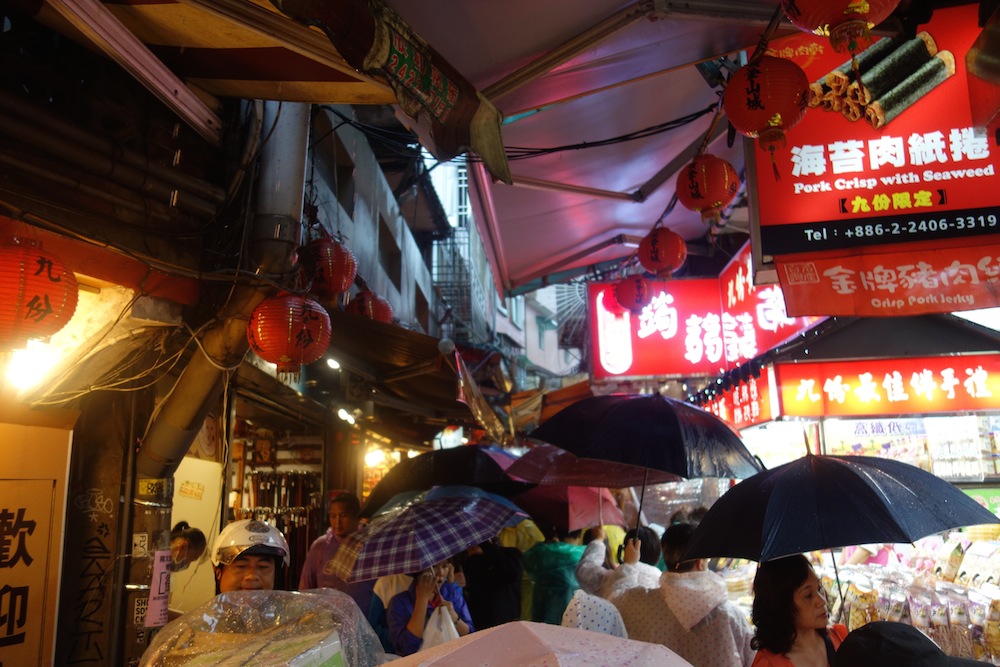
What, exactly, is the difference between those who sightsee on package tours — a form favored enough by Koreans that I don’t know many who haven’t been on one — and those spend their days taking unplanned walks across obscure sections of foreign capitals? Members of Korean tour groups at least engage in a collective experience of a kind they already know well from school and the workplace, they take plenty of pictures to share on social media, and they come home with purchases for themselves and others. (Though I do sometimes wonder what experiences the photos and souvenirs commemorate, apart from the experiences of taking photos and purchasing souvenirs.) What I usually come home with, other than something to write about, is harder to determine. The cliché about Western “Millennials” who drop themselves into other countries and eschew all their most popular and beloved sites is that we hope to come away from the experience somehow changed, personally enriched, and like all clichés it has a truth at its core.
At the very least, I always hope to come away having practiced the local language — something else I had to break away from the tour group to do in Taiwan, given that one of the main functions of such groups is to relieve their members from having to interact in the local language. (I do appreciate that my attempts at Mandarin, which I’ve been studying with Duolingo and other methods, make Korean feel much less difficult by comparison.) To truly know a place requires making an effort to speak its language as much as it requires getting the hang of its transit system, another of my unauthorized nighttime activities in Taipei. If package-tour culture in any country has a pernicious effect, it’s of making you believe you know a place when you don’t, that you’ve invested more into a relationship with a place than you really have. After all, why return to a country you’ve already “seen” when tour companies offer so many packages in so many others?
Though I’m not tempted to sign up for another one right away, this Korean package tour has made me want to go back to Taiwan as soon as I can. (That said, I could have done without the 45 minutes spent circling the block in the bus, music-box versions of “Hey Jude” and “Scarborough Fair” looping on its stereo, while most of the group were getting the “optional” foot massages for which they’d paid extra.) None of my other relationships with countries or cities have begun in quite this way, with exposure to so many of their standard landmarks, monuments, and “hot places.” Often that’s for the best: In Seoul I would recommend practically none of the officially approved tourist sites to a first-time visitor. But then, as with Korea, my relationship with Taiwan began long before I set foot there, back when I discovered all those films of the “Taiwanese New Wave.” And so it continues: The day I returned to Seoul, I heard that Edward Yang’s Taipei Story, his 34-year-old follow-up to That Day, on the Beach, will next week open in Korean theaters for the very first time.
Related Korea Blog posts:
Travel Is Living: How Airbnb Ingeniously Markets to Korea
A Korean Travel Writer Reveals the Los Angeles Even Angelenos Don’t Know
Travelogue Korea and the Dream of Isolation
A Traveler’s Video of Seoul Astonishes, while Official Promotion of Korea Embarrasses
Based in Seoul, Colin Marshall hosts the Korean-language podcast 콜린의 한국 (Colin’s Korea) and is at work on a book called The Stateless City: a Walk through 21st-Century Los Angeles. You can follow him at his web site, on Twitter @colinmarshall, or on Facebook.


